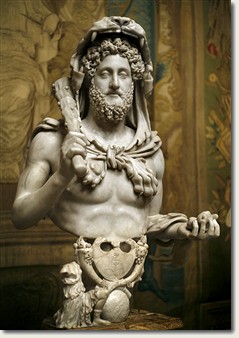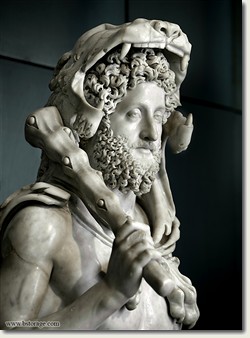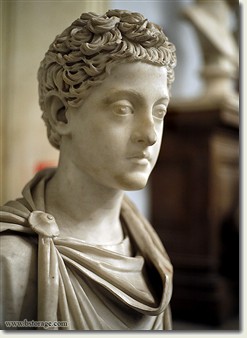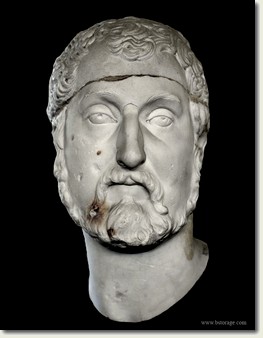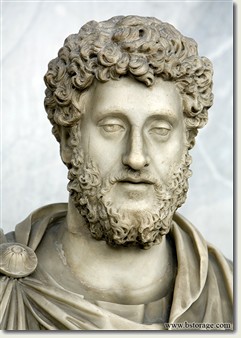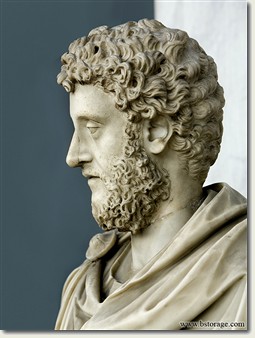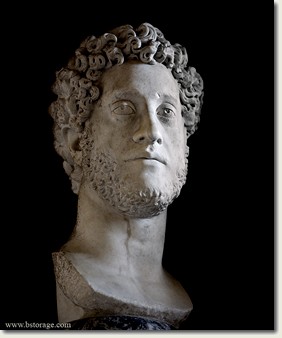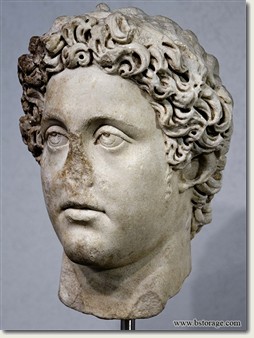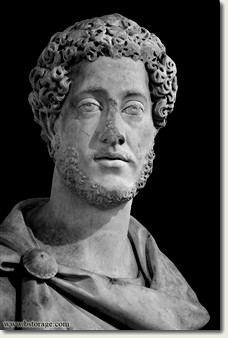| Imperial Portraits of Commodus | Home Up to Imperial Portraits
Commodus was Preceded by Marcus Aurelius Son of Faustina the Younger Succeeded by Pertinax Husband of Crispina
|
|
| Photos by Bill Storage and Laura Maish Email us about this page |
||
Marcus Aurelius Commodus Antoninus, emperor from 180 to 192 AD, when he has assassinated. He was son and successor of Marcus Aurelius and Faustina the Younger. The verdict of history on Commodus has been negative, although much of the primary source material is of dubious accuracy. Ancient sources, report however, that Commodus was well-liked by the public. Upon his assassination, his memory was official erased (damnatio memoriae), although it was rehabilitated soon after during the reign of Septimius Severus. He co-reigned and succeeded Marcus Aurelius, and preceded Pertinax. The first two photos are of a great masterpiece of imperial Roman iconography, Commodus as Hercules. The Herculean scene depicted is the taking of apples from Hesperides, thereby acquiring virtue and immortality. Art historians commonly see arrogance and
deceit in these portraits. I do not; and I seriously doubt that such
traits were intended to be shown by the artists who produced these
works. It is also commonly reported that the portrait of Commodus as
Hercules is evidence of his megalomanic nature, but in its day, this
portrait would be perfectly in line with earlier portraits associating
rulers with divinities or divine attributes; statues of Augustus as
Hercules, Claudius as
Jupiter, etc. are fairly common. |
| Copyright 2007 William Storage. Created 2/10/2007 |
|
|
Keywords: emperor, Roman imperial portraits, pictures of roman emperors, statue, sculpture, art history, iconography, William Storage, Bill Storage, Laura Maish, art history, Roman, ancient Rome |
|
